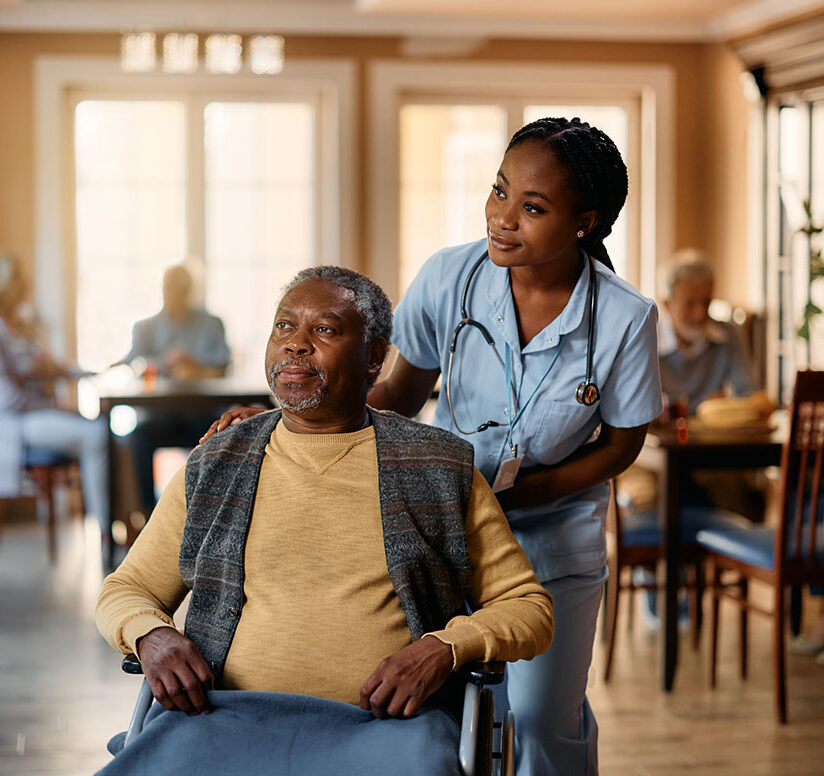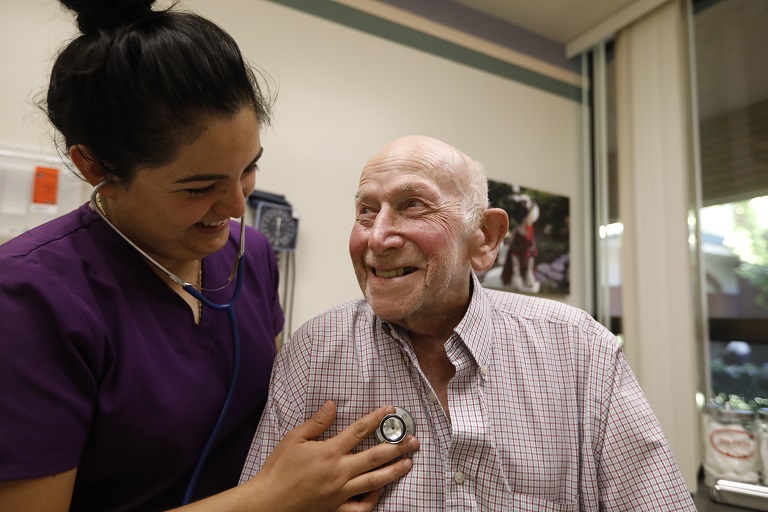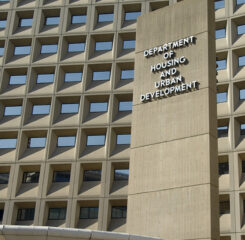CMS Issues New Recommendations to Nursing Homes in COVID-19 Crisis
On April 2, CMS issued enhanced recommendations for nursing homes in the battle to contain COVID-19. These recommendations draw on guidance from the CDC and are to be implemented immediately. CMS notes in these recommendations the difficulty nursing home providers will have due to scant supplies of appropriate PPE and recommends that nursing homes continue to refer to CDC guidance on optimization while coordinating with state and local health departments to address supply needs.
Adhere to Guidance
CMS urges nursing homes to “immediately ensure that they are complying with all CMS and CDC guidance related to infection control.” Of note, refer to CDC guidance on hand hygiene, optimization of PPE, and guidance to long-term care facilities. Additionally, LeadingAge highlights optimization strategies for facemasks due to growing concerns and supply shortages across the country.
Additionally, nursing home providers should refer to CMS guidance on infection control, including the new infection control survey tool released with CMS memo QSO-20-20-ALL. LeadingAge has created a supplemental tool to be used in conjunction with the CMS tool to help nursing homes prepare for and respond to COVID-19. LeadingAge notes that members in several states are reporting surveys, conducted both on-site and off-site, that utilize the CMS infection control survey tool. Recalling that normal survey activity is currently suspended with the exception of IJ-level complaints and facility-reported incidents, in addition to targeted infection control surveys, members should be aware that confirmed or suspected COVID-19 cases within a nursing home could be triaged at immediate jeopardy, thus triggering survey. Be prepared to provide your completed self-assessment (utilizing the CMS infection control survey tool) and all supporting documentation necessary to demonstrate compliance with the tasks therein, including showing what strategies you have undertaken to optimize supplies of PPE.
PPE Supply and Testing
CMS has urged state and local leaders to “consider the needs of long-term care facilities” relative to PPE and supplies. Members should continue working with state and local health departments for issues related to PPE and testing. Be sure to document all strategies to notify authorities, attempts to obtain PPE, and the outcomes of these actions.
The new guidance also announced that COVID-19 testing is covered under Medicare Part B when done by Medicare-certified labs. Coordinate with your lab now to determine testing procedures, including how specimens will be collected and results will be released.
Symptom Screening for All
Nursing homes must now implement symptom screening for all individuals living, working, or otherwise entering the nursing home. This screening includes a temperature check and asking about symptoms of COVID-19. The only exception to this recommendation is screening of EMS personnel. EMS personnel responding to an urgent medical need do not need to be screened by the nursing home.
To aid in screening, nursing homes should limit access points and ensure that each access point has a screening station. Any individuals attempting to enter the nursing home through alternate access points should be redirected to enter through an appropriate access point equipped to screen. No individual, with the exception of EMS personnel as noted above, should be entering a nursing home without having first been screened.
Additionally, all residents must be screened, including a temperature check, on a daily basis. This includes both residents who are symptomatic as well as residents who are asymptomatic. CMS further recommends that any residents or patients being admitted to a nursing home should be screened through COVID-19 testing, “if available.”
We note that in some areas or circumstances, nursing homes may not be able to request that patients or residents are tested prior to admission. In such circumstances, nursing homes should make appropriate arrangements for the patient or resident to be tested as soon as possible after admission. As noted above, coordinating with your lab now may help ensure a smoother process and prevent any delays in care.
Use of PPE
CMS recommends that full COVID-19 appropriate PPE should be worn for the care of all residents, regardless of COVID-19 status or presence of symptoms, when COVID-19 transmission is occurring within the nursing home. Additionally, all nursing home personnel should be wearing a facemask while in the nursing home. In implementing this recommendation,
- Refer to CDC guidance on strategies to optimize PPE.
- Pay attention to the capacity framework set forth by CDC in optimization guidance.
- Assess your PPE supplies and surge to choose the appropriate capacity strategies for each type of PPE.
- Also refer to the CDC’s PPE burn rate calculator to assist in this determination.
Recall from previously-released CDC guidance that if there are COVID-19 cases in the nursing home or sustained transmission in the community outside the nursing home, residents should remain in their rooms, coming out only for reasons of medical necessity. When leaving the room, residents should be wearing facemasks. CMS’s new guidance further clarifies that any residents who must regularly leave the facility, such as residents receiving dialysis treatment, should wear facemasks when outside their rooms.
Additionally, CMS recommends that all residents, regardless of COVID-status or the presence of symptoms, should cover their noses and mouths when staff enter their rooms. Residents who have been confirmed or are suspected to be COVID-19-positive should wear surgical masks. Residents who are not COVID-19-positive or assumed to be COVID-19-positive can cover using tissues. Cloth masks would also be appropriate for these residents.
We have heard from members across the country about the growing prevalence of cloth masks, sewn by volunteers and community groups. As these cloth masks are generally not considered PPE and are generally less effective at reducing transmission risk than surgical masks, one PPE optimization strategy that could be employed would be allowing residents to use the cloth masks as appropriate, while conserving surgical masks for residents who are assumed or confirmed COVID-19-positive and for staff who are performing care or otherwise interacting with residents.
Consistent Staffing and Designated Care Locations
Following previously-released recommendations from CDC related to cohorting of residents with confirmed or suspected COVID-19 diagnoses and symptoms, CMS now directs that nursing homes should cohort staff as well to prevent the risk of transmission. Staff members caring for confirmed or suspected COVID-19 residents, including residents with undiagnosed respiratory illness, should not care for residents with no COVID-19 symptoms or diagnosis.
When determining how to implement this recommendation, recall that healthcare personnel may work in multiple nursing homes or other healthcare settings. CMS guidance in QSO-20-14-NH REVISED directed nursing homes to identify staff working in multiple facilities. Coordinate with these facilities and staff to ensure consistency so that a staff member assigned to COVID-19-positive residents in one facility is not assigned to COVID-19-negative residents in another.
Recall that new 1135 waivers announced on March 30 establish authority to provide care at sites not previously certified for SNF services. Work with state and local health departments, state survey agencies, and CMS regional offices for enrollment of and utilization of such sites. While the new 1135 waivers impacted some transfer and discharge requirements related to shifting residents to designated care sites or designated units within the nursing home, discharge/transfer notice is still required, though the timing has been relaxed.
LeadingAge will continue to monitor this evolving situation. Please refer to the LeadingAge COVID-19 page, updated daily, for information and resources to assist members in addressing this emergency.

Most Recommended
October 15, 2025
 Shutdown Week Three: Impact of Ongoing Closure on Affordable Housing
Shutdown Week Three: Impact of Ongoing Closure on Affordable Housing
December 10, 2025
Fiscal Year (FY) Funding 2026
October 07, 2025
Immigrant Workforce Matching Program Brings Workforce Relief
Recently Added
December 19, 2025
House Moves Forward on Affordable Housing Reforms
December 19, 2025
White House Cannabis EO Paves Way for Research, Access
December 19, 2025
LeadingAge Urges DHS to Maintain "Public Charge" Guardrails
December 18, 2025



